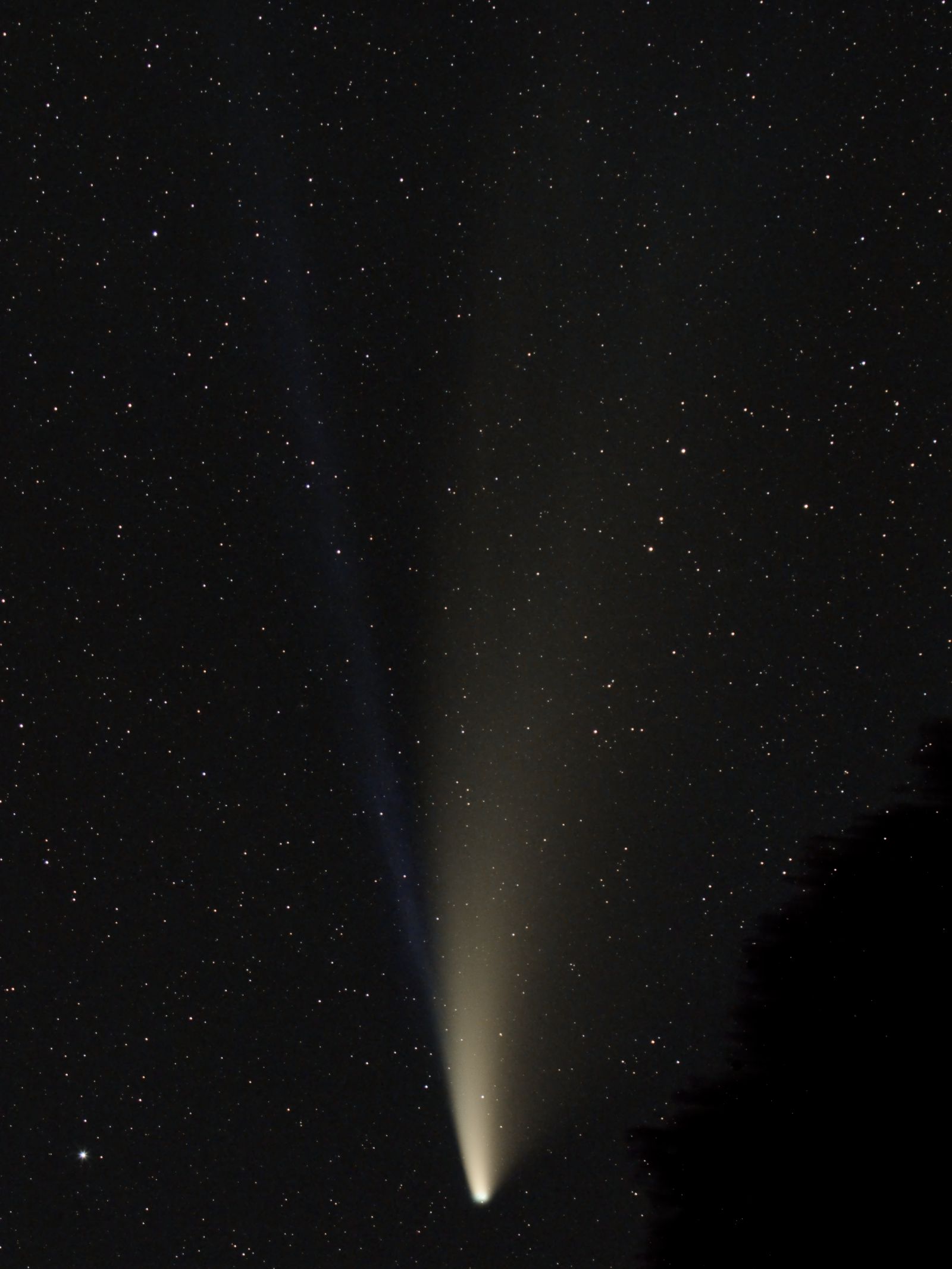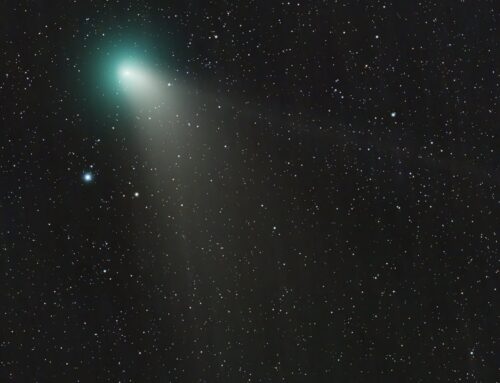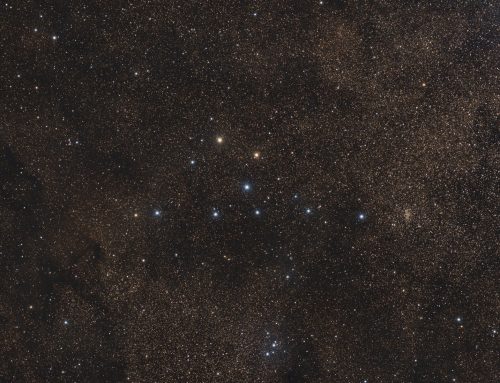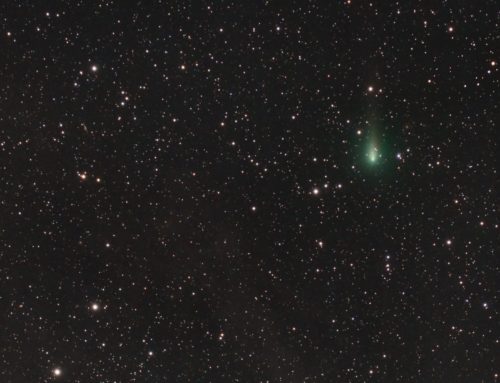Comet C/2020 F3 (NEOWISE)
Click image for full size version
July 17, 2020
I captured this comet from my home in Guelph, Ontario using a modest DSLR and lens, and a Sky-Watcher Star Adventurer mount! This lovely naked eye comet posed for this 10m exposure about an hour and a half after sunset. The black starless feature at lower right is the trees behind which the comet eventually set. This photo covers almost exactly 5 degrees (10 Moon diameters) from top to bottom, and I don’t think I got the complete tail in this shot. If I get another shot at it I might try a shorter focal length lens. Two tails are visible in this image, the straight blue ion tail made up of charged particles, and the yellowish diffuse dust tail made of debris and gases shed by the comet. Note that the comet is not plunging downward as it might appear in this shot. In reality, it is moving from lower right to upper left a little bit each day as it approaches Earth, passes us, and eventually leaves us behind. NEOWISE passed its point of closest approach to the Sun on July 3, 2020. It will reach its closest approach to Earth on July 23, 2020. This pass through our solar system has increased its orbital period, and it won’t return to Earth’s skies for about 6,800 years.
Tekkies:
Canon 70D modified with Kolari Vision astrophotography filter; Canon 100-400mm f/4-f/5.6 L lens at 100mm , f/5.6 ,and 800 ISO; Sky-Watcher Star Adventurer mount. Manual polar alignment and focusing. All pre- and post-processing in PixInsight. Shot from my SkyShed in Guelph, Ontario. No moonlight and good transparency.
Total: 10 minutes
Data Reduction and Initial Processing
Preprocessing: The WeightedBatchPreProcessing script was used to create a master frame.
Gradient Removal: DBE was applied to the master using Subtraction.
Linear Processing Steps
Colour Balancing: Colour was balanced with the ColorCalibration tool.
Linear Noise Reduction: MultiscaleLinearTransform was used to reduce noise in the background areas, using an internal mask to protect bright structures (stars and comet). Layer settings for threshold and strength: Layer 1: 5.0 0.85, 2 iterations; Layer 2: 3.5, 0.75, 2 iterations.
Stretching: MaskedStretch was followed by a contrast boost with CurvesTransformation to make a pleasing, bright image, with background intensity of approximately 0.10.
Nonlinear Processing Steps
Noise Reduction: TGVDenoise was used in L*a*b* mode to reduce noise with a mask used to target the background areas and protect the stars and comet head (max. 1,000 iterations and convergence selected for both lightness and chrominance).
Final Steps: Background, cometary features, and stars were adjusted for brightness, contrast, and colour saturation in several iterations using CurvesTransformation with masks as required. ICCProfileTransformation (sRGB IEC61966-2.1; Relative Colorimetric with black point compensation) was applied prior to saving in jpg format.







Leave A Comment